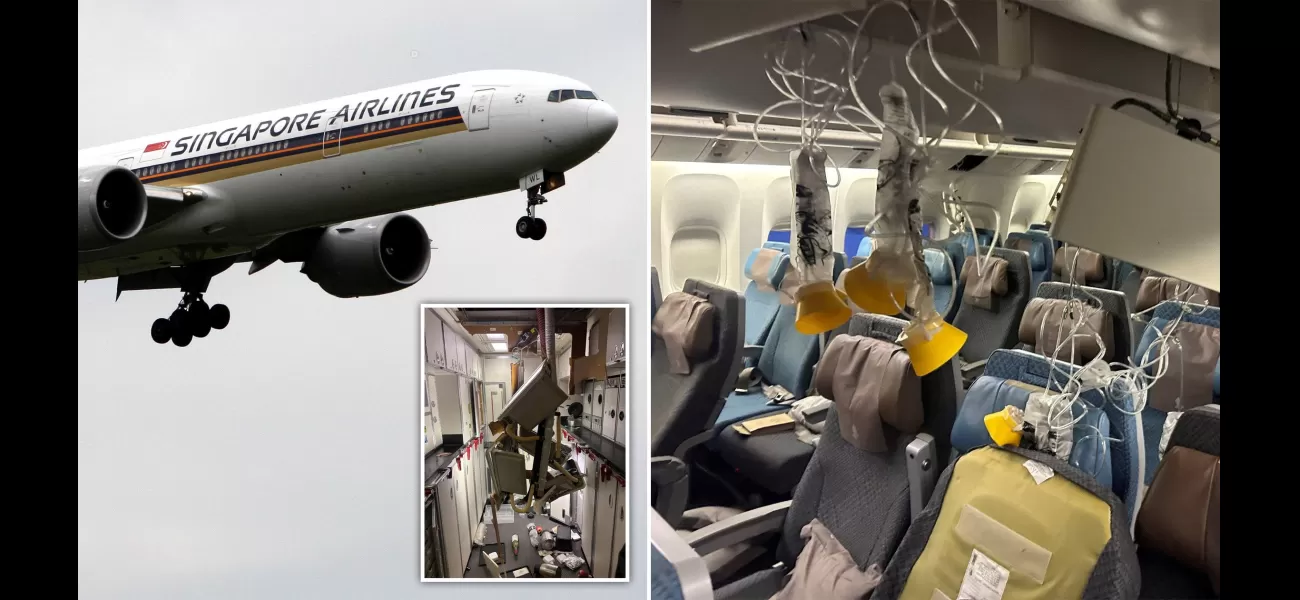What makes turbulence worse and why is it increasing?
A UK man died during turbulence on a Singapore Airlines flight from Heathrow.
May 22nd 2024.

A tragic incident occurred on a flight from Heathrow to Singapore, resulting in the death of a British man due to severe turbulence. As we all know, turbulence is a common occurrence during air travel, often accompanied by the seatbelt light turning on and passengers being advised to return to their seats. Usually, it's just a bit of jostling and people tend to ignore the warnings and continue with their activities, such as going to the restroom.
However, as we witnessed yesterday, turbulence can also have serious consequences. In the worst cases, it can even be deadly. This was the case on a Singapore Airlines flight when it suddenly descended 7,000 feet in just six minutes, tossing passengers into the air and causing chaos on board. Sadly, 73-year-old Geoffrey Kitchen suffered a fatal heart attack during this turbulent episode as the plane flew over Myanmar.
So, what exactly causes turbulence? According to the Met Office, it is defined as the unpredictable movement of air that can result in sudden movements of an aircraft during flight. There are generally four types of turbulence, each caused by different factors. Some types, like those caused by thunderstorms, can be anticipated and even forecasted. However, there are also types that are harder to predict and can seemingly appear out of nowhere.
One such type is known as "clear-air" turbulence, which is difficult to detect as there are no visible clouds. It is often caused by jet streams and can result in sudden vertical movements that catch passengers off guard. Another type, called "wake turbulence," is caused by the lift produced by aircraft themselves. The US Federal Aviation Administration explains that this type of turbulence is created when aircraft create lift, similar to ocean waves crashing onto a beach.
But just how predictable is turbulence? While there are methods for forecasting and avoiding turbulence, it is ultimately impossible to completely avoid it. This is because turbulence can be invisible and can arise unexpectedly, even when pilots are using weather radar systems. Marco Chan, a senior lecturer in aviation operations, explains that pilots rely on their own experience and weather charts to anticipate turbulent areas and try to avoid them. They also communicate with other pilots to share information about any turbulence they have encountered.
Some may wonder if turbulence is getting worse due to climate change. The answer is yes. As extreme weather events become more frequent and intense, turbulence is also increasing in both frequency and strength. A study from 2017 found that turbulence could more than double in certain areas, particularly at higher altitudes. However, despite its potential danger, the likelihood of experiencing turbulence is still relatively rare.
According to Mr. Chan, turbulence is a serious matter and that is why pilots and airlines have multiple safety measures in place to prevent and manage it. This includes rigorous training for cabin crews and efficient communication between pilots to avoid turbulent areas. While turbulence can still cause problems, the risk of serious injury or death is relatively low, which is why incidents like this are rare and make headlines when they do occur.
However, as we witnessed yesterday, turbulence can also have serious consequences. In the worst cases, it can even be deadly. This was the case on a Singapore Airlines flight when it suddenly descended 7,000 feet in just six minutes, tossing passengers into the air and causing chaos on board. Sadly, 73-year-old Geoffrey Kitchen suffered a fatal heart attack during this turbulent episode as the plane flew over Myanmar.
So, what exactly causes turbulence? According to the Met Office, it is defined as the unpredictable movement of air that can result in sudden movements of an aircraft during flight. There are generally four types of turbulence, each caused by different factors. Some types, like those caused by thunderstorms, can be anticipated and even forecasted. However, there are also types that are harder to predict and can seemingly appear out of nowhere.
One such type is known as "clear-air" turbulence, which is difficult to detect as there are no visible clouds. It is often caused by jet streams and can result in sudden vertical movements that catch passengers off guard. Another type, called "wake turbulence," is caused by the lift produced by aircraft themselves. The US Federal Aviation Administration explains that this type of turbulence is created when aircraft create lift, similar to ocean waves crashing onto a beach.
But just how predictable is turbulence? While there are methods for forecasting and avoiding turbulence, it is ultimately impossible to completely avoid it. This is because turbulence can be invisible and can arise unexpectedly, even when pilots are using weather radar systems. Marco Chan, a senior lecturer in aviation operations, explains that pilots rely on their own experience and weather charts to anticipate turbulent areas and try to avoid them. They also communicate with other pilots to share information about any turbulence they have encountered.
Some may wonder if turbulence is getting worse due to climate change. The answer is yes. As extreme weather events become more frequent and intense, turbulence is also increasing in both frequency and strength. A study from 2017 found that turbulence could more than double in certain areas, particularly at higher altitudes. However, despite its potential danger, the likelihood of experiencing turbulence is still relatively rare.
According to Mr. Chan, turbulence is a serious matter and that is why pilots and airlines have multiple safety measures in place to prevent and manage it. This includes rigorous training for cabin crews and efficient communication between pilots to avoid turbulent areas. While turbulence can still cause problems, the risk of serious injury or death is relatively low, which is why incidents like this are rare and make headlines when they do occur.
[This article has been trending online recently and has been generated with AI. Your feed is customized.]
[Generative AI is experimental.]
0
0
Submit Comment





